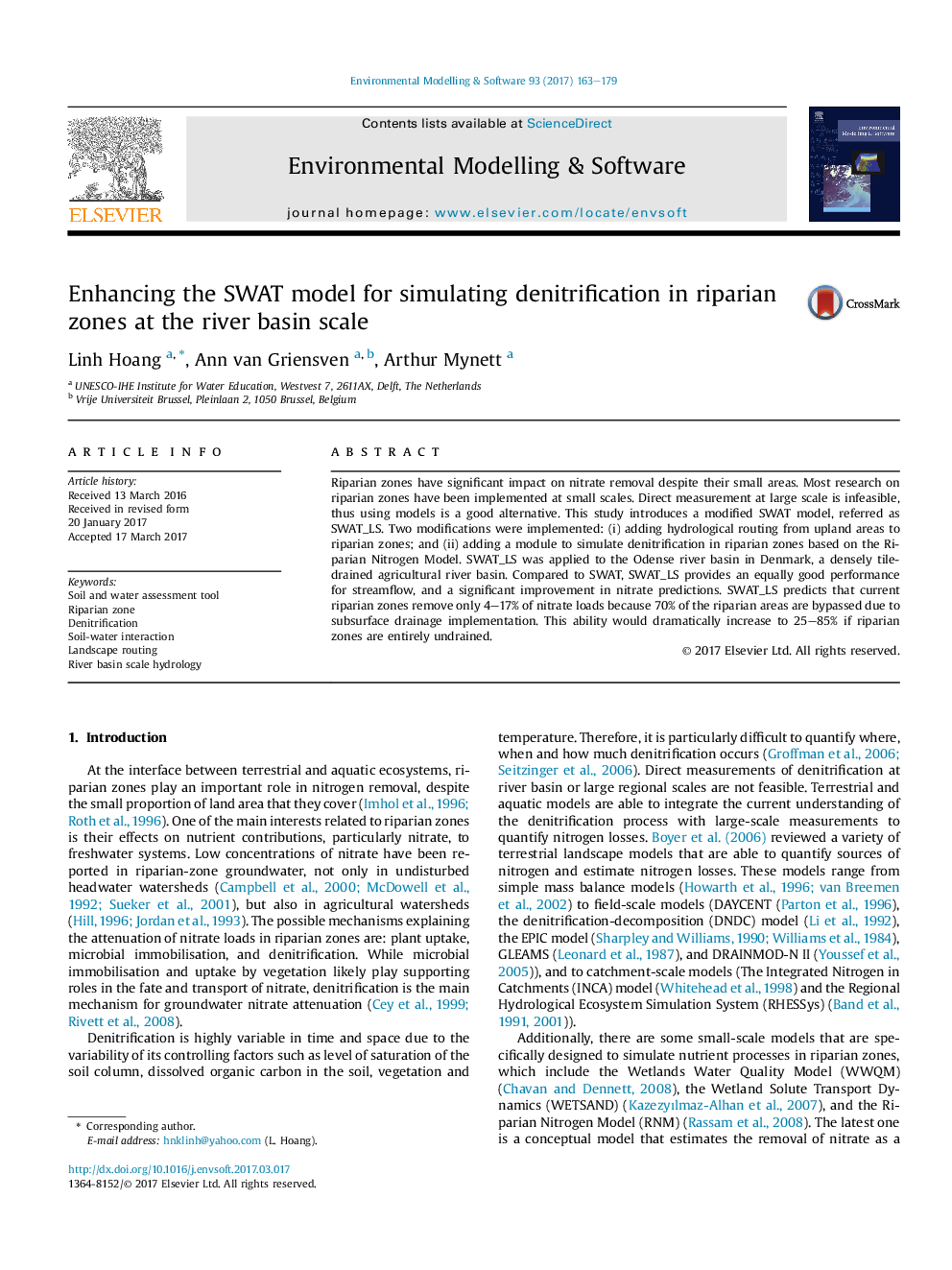| Article ID | Journal | Published Year | Pages | File Type |
|---|---|---|---|---|
| 4978085 | Environmental Modelling & Software | 2017 | 17 Pages |
Abstract
Riparian zones have significant impact on nitrate removal despite their small areas. Most research on riparian zones have been implemented at small scales. Direct measurement at large scale is infeasible, thus using models is a good alternative. This study introduces a modified SWAT model, referred as SWAT_LS. Two modifications were implemented: (i) adding hydrological routing from upland areas to riparian zones; and (ii) adding a module to simulate denitrification in riparian zones based on the Riparian Nitrogen Model. SWAT_LS was applied to the Odense river basin in Denmark, a densely tile-drained agricultural river basin. Compared to SWAT, SWAT_LS provides an equally good performance for streamflow, and a significant improvement in nitrate predictions. SWAT_LS predicts that current riparian zones remove only 4-17% of nitrate loads because 70% of the riparian areas are bypassed due to subsurface drainage implementation. This ability would dramatically increase to 25-85% if riparian zones are entirely undrained.
Related Topics
Physical Sciences and Engineering
Computer Science
Software
Authors
Linh Hoang, Ann van Griensven, Arthur Mynett,
